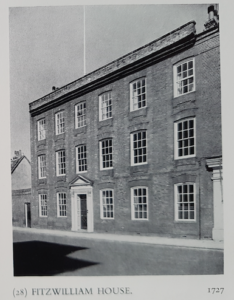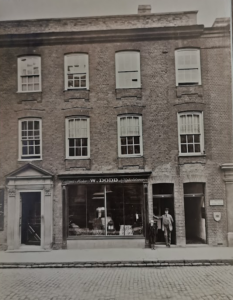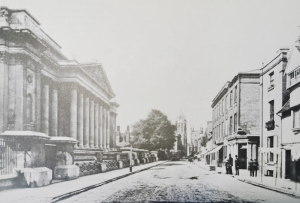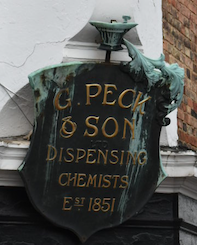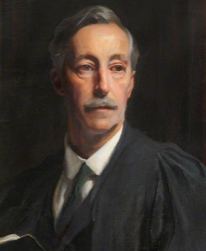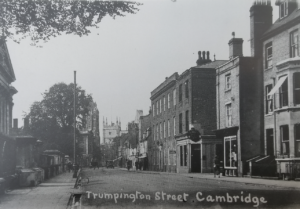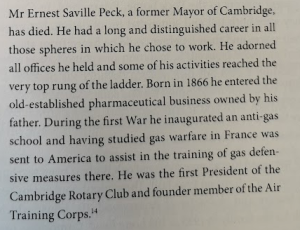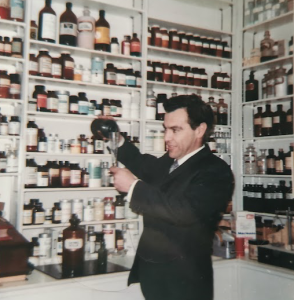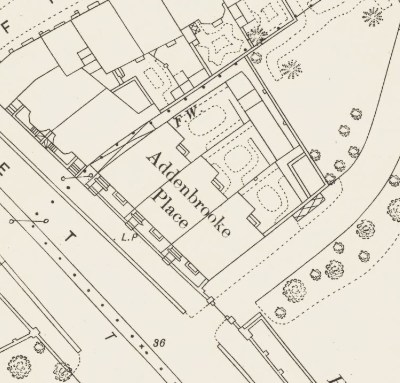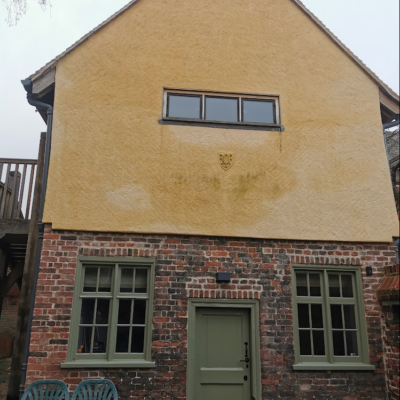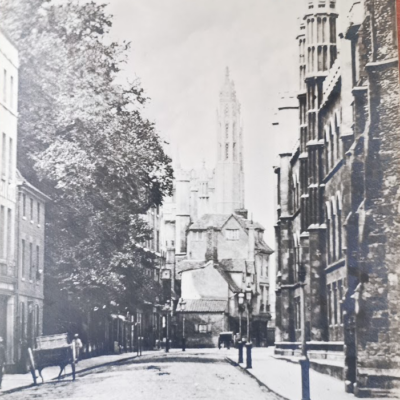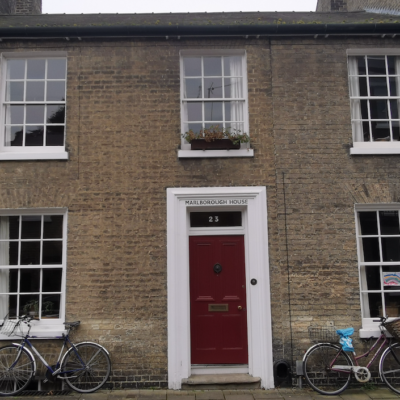Search by topic
- archaeology
- architecture
- bricklayer
- Building of Local Interest
- carpenter
- church
- crime
- dressmaker
- fire
- Great Eastern Railway
- listed building
- medieval
- oral history
- Public House
- Rattee & Kett
- Religious House
- Roman
- scholar
- school
- Then and Now
- tudor
- women
- work
- world war one
- world war two
Search by text
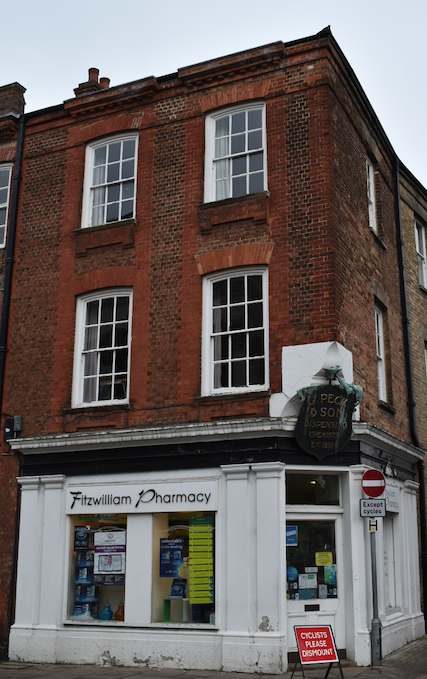 30 Trumpington Street
30 Trumpington Street30 / 31 Trumpington Street, Fitzwilliam House / Hall
History of Fitzwilliam House, 30 Trumpington Street
Wikipedia: In 1869, Cambridge University altered its statutes to allow men who were not members of a college to become members of the University under the supervision of a censor, whose office was in Trumpington Street, opposite the Fitzwilliam Museum. This provided students who could not afford to belong to a college with a base from which to study at the University, allowing them to be admitted to degrees, sit examinations and compete for scholarships. The name “Fitzwilliam” was chosen by the students at a meeting of the Non-Collegiate Amalgamation Club in the Spring of 1887 and, as a result, the University decreed that the house in Trumpington Street could be known as Fitzwilliam Hall. This became the headquarters of the Non-Collegiate Students Board and provided student facilities and limited accommodation. It was renamed Fitzwilliam House in 1922.
A B Gray in Cambridge Revisited (1921) notes the inscription above one of the ground floor windows. ‘1727 I H X’ : 1727 is the year it was built and I H are probably the initials of the owner.
1727
House built by John Halstead, the brewer.
c.1830 pharmacy opened by Thomas Cox
1874
George Peck took over these premises in 1874.
1881
(30)
George Peck, 54, chemist, b Cambridge
Helen M, 20, b Cambridge
Edith Emily, 16, b Cambridge
Ernest Saville, 14, b Cambridge
Herbert John, 12, b Cambridge
Sydney Capel, 9, b Cambridge
Harold R, 7, b Cambridge
Lillian C, 4, b Cambridge
Rose Flitton, 17, servant, b Great Shelford
Louisa Pettett, 16, house maid, b Little Shelford
William A Rhodes, lodger, 25, dentist in practice, b Yorks
In 1871 the family were at 36 Trumpington Street.
(31)
Walter Dodd, 36, cabinet maker, b Suffolk
Louisa S, 36, b Cambridge
Nellie L, 13, b Cambridge
Henry W, 12, b Cambridge
Florence, 8, b Cambridge
Annie, 6, b Cambridge
Jame, 4, b Cambridge
Eliza Farrant, 25, parlour maid, b Cambridge
In 1878 W Dodd cabinet maker is listed in Kelly’s at 21 Trumpington Street.
1891
George Peck, 64, chemist, b Newnham
Helen,
Helen M,
Edith E,
Ernest S, 24, pharmaceutical chemist,
Herbert S, 22, university student,
Sydney C, 17, chemical student,
Harrold R,
Alfred G,
Lillian C,
Rebecca Nicholl, 18,
Rebecca Thomson, 18,
In 1901 the family were living at 25 Fitzwilliam Street.
Herbert John went to the Perse School, and went on to be ordained an be a missionary in the North-Western Province of India. In WWI he was an army chaplain.
Sydney Capel became a Major-General. He served in India, Nigeria and France and was assistant director of the Royal Arsenal from 1908 to 1914. He was a battery commander in WWI and awarded the DSO in 1917. He headed the military mission to Fiume in 1919.
1893
Ernest Saville Peck attended Fitzwilliam House, part of Cambridge University intended for local men.
1902
Ernest joined the 3rd Volunteer battalion of the Suffolk Regiment
1904
Ernest took over the management of the business
1907
Ernest married Rachel Brenda Hall.
1909
Ernest Saville took over the business on the death of his father.
1910
1913
G Peck and son, pharmaceutical chemists
[Ernest Saville Peck became an authority on chemical weapons during WWI]
1913 Fitzwilliam Hall
William Fiddian Reddaway MA, censor of Non-Collegiate Students
Rev. A O N Lee, resident chaplain
B Rolfe, steward
H E Martin, librarian
After she left school Pamela Knights worked for the Maintenance Fund which was housed in Fitzwilliam House, next to the old Addenbrookes Hospital:
1955
Ernest Saville Peck died
On his death, his collection of mortars and pestles were bequeathed to the Pharmaceutical Society.
1962 G Peck and Son Ltd (A Border Mgr)
Fitzwilliam House
Henry Epstein was an assistant at Peck and Son in the 1960s. He lived with his family in Topcliffe Way.
1977
Peck & Son Ltd bought by Savory and Moore.
Contribute
Do you have any information about the people or places in this article? If so, then please let us know using the Contact page or by emailing capturingcambridge@
License
This work is licensed under CC BY-NC-SA 4.0








